Low carb diets for weight loss - including Atkins, Keto, Pale, Dukan and South Beach
Although lots of experts disapprove of low carb diets for health reasons, many, particularly those who love bacon and eggs, find it works!

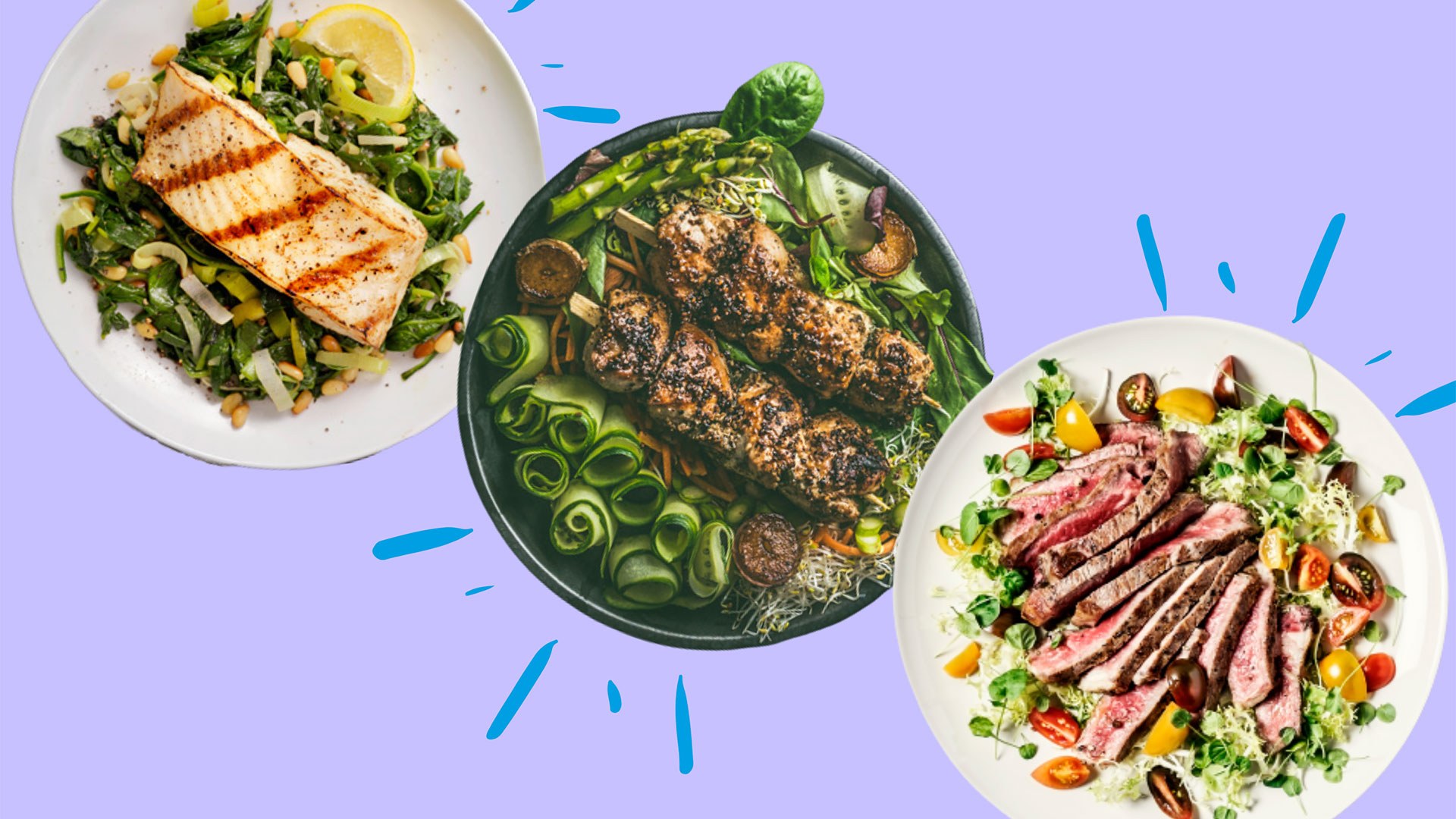
While the most famous is Atkins, there are other low carb diets for weight loss that many people have success with. But are they right for you?
Registered dietician Claire Muszalski told us, "Low carb diets for weight loss have been popular for years. Most of their popularity is based on their promises to help followers lose weight fast or health benefits. According to Diabetes UK, these benefits include lower blood sugar levels and less risk of hypos, more energy and focus, fewer cravings for sugary or junk foods, and a reduced risk of long-term health problems associated with diabetes.
However, there are often unwanted side effects. These most commonly include bad breath, constipation, and headaches. But in extreme cases can lead to more serious illness, such as heart disease and cancer – in part due to the high animal fat content.
While many dieticians recognise low carbs diets can be good for weight loss, they'd also advise against cutting out entire food groups for a long period of time. Claire told us: 'In general, low carb diets work because you are likely reducing your overall calorie intake by cutting out many high calories or low nutrient density foods. I believe in limiting portions and following a plan that is sustainable for your lifestyle but would always hesitate to suggest a diet pattern that completely cuts out any food groups. Eliminating all healthy wholegrains or fruits, for example, can leave you at risk for nutrient deficiencies in the long run,' she warns.
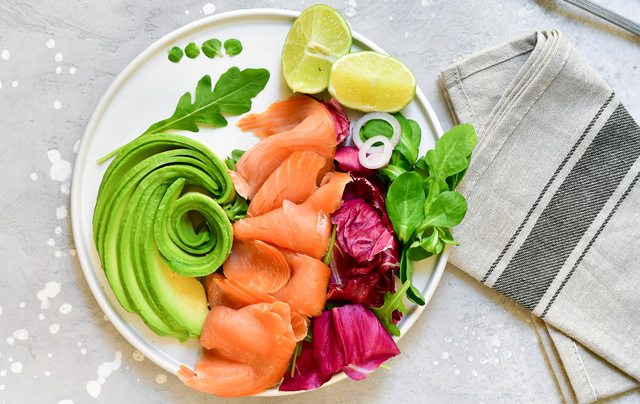
Our advice? Check with your doctor first – in case a low carb diet clashes with any health conditions or lifestyle activities – and follow a low carb diet for a short period. When you go back to eating normally, limit refined carbs and sugar. Focus on eating a moderate amount of carbs – no more than 260g a day for adults (half that for people managing type 2 diabetes). And choose healthier fibre-rich sources, such as fruit and veg, pulses and wholegrains.
Low carb diets for weight loss
Here are five of the most well-known low carb diets for weight loss. While they'll all help followers shed a few pounds, some plans can be stricter than others.
Claire told us, "Carbohydrates trigger the release of insulin, a hormone that leads to energy (or fat) storage,". Lower your carb intake and you enter ketosis. This is when the body starts to burn stored fat for energy instead of carbs. Some diets allow you to reach ketosis quicker and for longer, and people reach ketosis at different points – lifestyle, diet and size all affect the time it takes to reach this state. Only very low carb diets can keep you in a constant state of full ketosis; on others, you'll move in and out of it."
Parenting advice, hot topics, best buys and family finance tips delivered straight to your inbox.
Research indicates that following a low carb diet keeps the weight off long-term. 'A 2018 study in the British Medical Journal showed that a low carb diet supports weight loss maintenance,' she says. However, although a 2012 study backed up this success it found that higher protein intake was a key factor.
1. The Atkins Diet
The most famous of all the low carb diets for weight loss, the Atkins diet was devised in the 1970s by an American doctor called Robert Atkins. It became hugely popular in the 2000s and has evolved over the decades. For example, it now includes more fibre and exercise.
The diet works on the premise that carbohydrates – particularly refined carbs – can cause health issues. These include weight gain, heart problems and blood sugar spikes that lead to insulin resistance. By restricting refined carbs, the body enters ketosis and this is how weight loss occurs.
It is thought that following the Atkins can help you lose weight quickly. Atkin's literature states that up to 15lb can be lost in the first two weeks, although some of this will be 'water weight'. In reality, after an initial weight drop, the average person is more likely to lose 1-2 pounds a week. According to clinical trials when followed correctly for a year the Atkins can help people to lose weight and keep the weight off – although another study indicated that weight loss plateaus at six months.
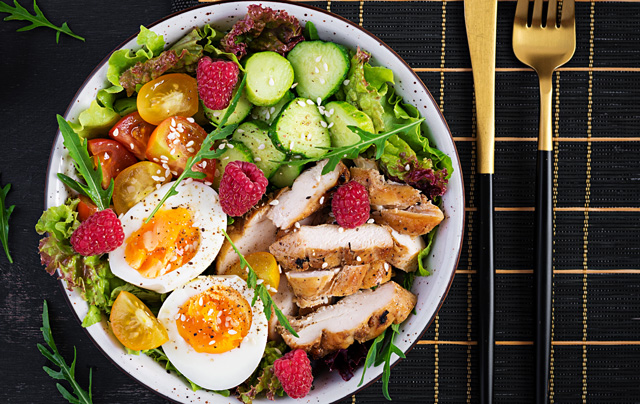
Claire explains: 'The Atkins is a very low carb, high fat, high protein diet for weight loss, that gradually reintroduces carbs after the weight loss goal is met.' There are four phases to the Atkins and you need to stick to these to see results. In Phase 1 followers eat less than 20g carbs a day. This is alongside protein and fats such as red meat, chicken, fish, and seafood; cheese and eggs; healthy fats such as olive oil and avocado; nuts and seeds; and non-starchy vegetables.
After two weeks, Phase 2 begins. Carb intake is slowly increased from 20g, to 25g, to 30g over a few weeks, and fruit and more dairy and fiber-rich foods are allowed. Phase 3 allows for more healthy carbs such legumes and wholegrains. Here, weight loss continues but starts to slow down. Once the desired weight loss is achieved and maintained for a month, followers enter Phase 4. Also known as the lifelong phase, you'll need to monitor your weight to see how many carbs you can tolerate without gaining pounds. This is usually 40g-120g carbs a day depending on the person.
David Stache, sports nutritionist at Instant Knockout, also explains that if part of the problem is your addiction to carbs the Atkins can rebalance your eating patterns.
He says: 'If you’re struggling with carbs, always at the biscuit tin and can’t say no to a meal deal, then the rigid structure and guidelines of the Atkins diet can act as a way of breaking that cycle and your emotional fix with carbs.'
PROS:
- The high protein and fat content leaves followers feeling less hungry than other low carb diets
- It also includes 'treat' foods such as cheese, so you don't necessarily feel deprived
- It can help reset carb cravings
- Low-carb diet has been proven to help balance blood sugar levels and regulate insulin, which can help manage the symptoms of type 2 diabetes
CONS:
- Like many diets, the Atkins is restrictive
- While you don't need to calorie count or control portion sizes, you do need to carb count by looking up the carb content of everything you eat
- Side effects include bad breath, constipation, dizziness, fatigue, and headaches
- Avoiding whole food groups can make for nutritionally unbalanced meals
- Followers have reported low blood sugar and kidney problems
- Research shows, eating high amounts of fat and protein may increase your risk of heart problems and even cancer
2. The Keto Diet
Claire told us, "The ketogenic diet is an extremely low carb – less than 20-50g per day. It's also a high-fat diet, most calories come from fat. That makes your body burn fat because carbs are not available."
Again, this is to bring the body into a state of ketosis, which – if you're successful – helps you lose weight quickly. Most low-carb diets work on this premise, but keto is perhaps one of the more intense options to follow because the carb content is so low. This can make it harder to stick with.
Because most of the keto diet's calories come from fat (up to 90 percent, according to Harvard Health) – much of which are from saturated fat, you run the risk of consuming too much 'bad' fat. To avoid this, choose as many healthy fats as possible, which you can source from avocados, nuts and olive oil.
Followers also eat a moderate amount of protein and a very small amount of carbs. A typical list of foods for the keto includes meat such as chicken, fish, high fat dairy, leafy greens, non-starchy veg such as cauliflower and broccoli, nuts and seeds, avocados, berries and other fats such as coconut oil and olive oil.
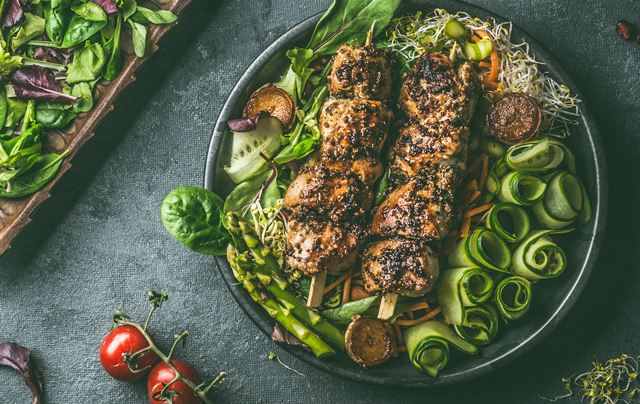
Avoid all grains, rice bread and other carbs. Starchy veg such as potatoes and squash, legumes, and most fruit and sugar are off the menu, too.
The keto diet was originally used by doctors – with some notable success – to treat epilepsy in children. It has since been used as a potential therapy to slow the progression of other neurological conditions such as motor neurone disease (known as ALS in the US) and Alzheimer's. Most people now know it as an effective weight loss tool; however, the jury is still out as to whether the keto qualifies as a safe long-term eating plan.
As with any diet – but perhaps especially important with diets that forgo particular food groups – it's in your best interests to see a doctor or nutritionist first. They can tailor the keto to your needs and monitor your weight loss and side effects.
Ketosis can also decrease the body’s level of the 'hunger hormone' gherlin and in doing so help curb cravings. 'If you want to improve how your body utilises fat as a fuel, the keto diet does offer benefits as a nutritional strategy,' says David.
PROS:
- The keto diet has helped many people lose weight quickly
- Followers have reported losing 1-10lb in the first week depending on their size - although it's worth noting a proportion of this will be water weight
- It can be an effective way to manage symptoms in some neurological conditions, too
- Research suggests that it reduces obesity and "improves glycemic control" in those with type 2 diabetes is promising
- For carb addicts, it can reset their relationship with food.
- Can help reduce carb and sugar cravings
CONS:
- It's very restrictive and requires sticking to a rigid eating plan
- Like all low carb diets, you may suffer from brain fog, fatigue, irritability or constipation
- The amount of saturated fat in the keto may increase your 'bad' cholesterol
- There is also the potential for liver issues or kidney problems due to the overload of fat and protein in the system
- The lack of a major food group can lead to nutrient deficiencies
- Diabetics should always check before starting the keto, as should people on blood pressure medication
3. The Paleo Diet
Also known as the 'caveman diet' (paleo is short for paleolithic) the paleo diet mimics what our pre-agricultural ancestors ate – natural foods that aren't cultivated or processed.
This, say paleo aficionados, curbs obesity and certain medical conditions that our predecessors weren't known to experience. It is one of the best low carb diets for weight loss and clean living.
Claire tells us: 'Based on our ancestors’ diets, the paleo consists mostly of meat, fish, certain vegetables and fruit.' It also includes nuts and seeds, certain oils and some eggs. Paleo recipes are generally quite simple to follow.
'There are no grains or dairy products,' adds Claire, as both are cultivated by humans. If you follow a paleo diet you eat only what you could hunt or forage.
One of the most popular low carb diet for weight loss, it's a good option if you want to make long-term changes to your life. Especially if you fight constant tiredness or are concerned – or allergic to – any chemicals, additives, pesticides, antibiotics or preservatives in food.
It's better to eat grass-fed, non-processed meat and organic eggs and fruit and veg. This is so the food is as nutritious as it can be, and so you avoid consuming any pesticides. While this is a positive move, it can put a significant dent in your grocery budget. Vegans could follow a version of the paleo called the pegan diet.
https://www.youtube.com/watch?v=R9mN-d2CDUU
Dr Loren Cordain, author of The Paleo Diet: Lose Weight and Get Healthy By Eating The Food You Were Designed To Eat and an authority on the subject, recommends following the paleo in three stages.
The first is 'Entry Level' where you continue to have three 'open' (treat) meals a week. This is when you can eat pasta, or drink coffee and alcohol, to help with the transition. Stay on this level until your mind and body are ready for the next stage. Maintenance Level' is when you only have two open meals a week. This is eventually followed by the third stage – Maximum Weight Loss Level. You are only allowed one open meal a week.
There's also some indication that a paleo diet can improve metabolic syndrome ("the medical term for a combination of diabetes, high blood pressure and obesity" according the NHS). Studies also suggest that it can be beneficial in the management of type 2 diabetes and some risk factors for cardiovascular disease.
Nutritionists tend to be cautious of eliminating whole food groups – for good reason. We get much of our calcium, for example, from dairy, and B vitamins from wholegrains.
For David, the main benefit of the paleo is for those of us who often eat on the run. 'If you’re a basic cook and rely on fast food for your nutrition, the paleo offers a basic list of ingredients to eat from and build your culinary skills,' he says.
Be wary of the paleo food industry, too. 'I've never seen a photo of a caveman eating a brownie,' says David. 'Don’t kid yourself that a paleo brownie is a thing,' he warns
Our ancestors were a lot more active than we are in our current society, so the need to exercise daily should be taken into account.
PROS:
- The paleo is more of a lifestyle choice than a quick-fix diet
- There is very little sugar, salt and alcohol and an onus on wild, lean meat, and non-starchy fruit and veg
- You can eat some healthy fats (such as walnut and avocado) and natural sugar from the likes of honey
- This clean eating philosophy is arguably kinder to your health and to the planet
- Paleo can make mealtimes more interesting. You can eat steak for breakfast if you wish – a definite perk for some
- You can eat as many allowed foods as you want – good news if you have a big appetite.
- Can improve metabolic syndrome
- May be beneficial for managing type 2 diabetes
CONS:
- It's a strict diet that requires a period of adjustment then ongoing commitment
- If you love certain food groups such as dairy or legumes (e.g. beans, chickpeas or peanuts) it may be a step too far
- It's very tricky – though not impossible – to follow if you are vegetarian
- Eating only organic produce can be expensive
- Requires daily exercise
4. The Dukan Diet
'You don’t lose weight when you’re hungry,' said French physician Pierre Dukan, who created the Dukan diet, an eating plan 'focused on lean protein sources and lower fat intake than some other low carb diets but with a heavy focus on animal-based foods,' says Claire.
Like the Atkins it has four phases. These are Attack, Cruise, Consolidation and Stabilisation. And the Dukan only allows 100 specific low-fat foods. There are 68 pure protein sources such as meat, fish, seafood, tofu, eggs and low fat dairy. Eat these in the first 2-5 Attack days (the duration depends on your age and how much weight you need to lose) to stimulate the metabolism and trigger weight loss. Next is the Cruise phase. You'll stay here until you've reached your desired weight. In this phase, you can also eat from a range of 32 vegetables. You will alternate between pure protein days and protein-plus-vegetable days.
In the Consolidation phase you can eat more foods. These include a daily piece of fruit, some hard cheese and wholegrain bread, plus two guilt-free meals a week. You must have one pure protein day a week. This phase is not not about losing weight but not regaining what you've lost. In the Stablization phase, you can eat what you want. However, you must continue to have a pure protein day once a week.
It's also necessary to eat 1.5-3 tablespoons of oat bran a day (depending on which phase you're in). Oat bran is an excellent source of fibre and the only carb allowed in the Attack phase and on pure protein days. It helps provide a feeling of fullness, slows down the absorption of sugar and fat in the gut, and keeps blood sugar stable. You should also drink 1.5 litres water a day and exercise daily.
The main benefit of the Dukan is the time scale. 'It's a relatively short term diet to drop excess weight,' says David. It also involves eating natural foods only, rather than processed options such as shakes and protein bars
It is not advisable to follow a high protein diet indefinitely. One study found that a high protein Western diet can damage the kidneys and exacerbate "the development of metabolic disease" while another study found that long-term usage in women "may pose health threats through acquiring kidney and liver disease, osteoporosis and cardiovascular disease."
'The Dukan isn't a very socially inclusive diet, either, as it’s just high protein,' warns David. So, it's not one to follow if you've got meals out planned. It can also be tricky if you share mealtimes with others at home.
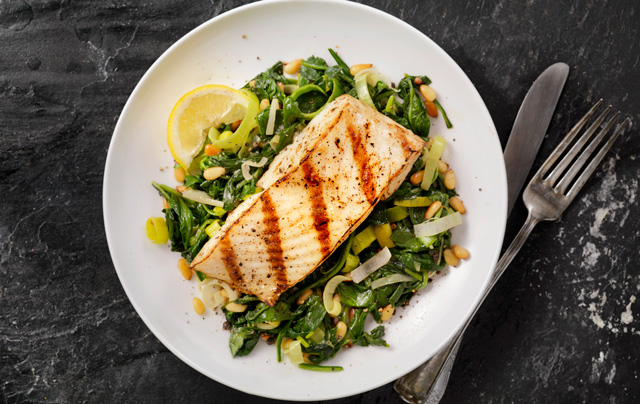
PROS:
- It's a fast wat to lose weight
- There's also no calorie counting
- You can eat as much as you want from the 100 foods list on the days allowed
- Involves eating whole, non-processed foods only
- The high protein content helps control hunger pangs and food cravings
- Like most low carb diets, there are promising studies that show that following a low carb diet balances blood sugar levels.
CONS:
- It's a strict diet. The 100 foods (only protein and veg) can be restrictive and get boring.
- There are also a lot of forbidden foods at first, which you may come to resent.
- It's not nutritionally balanced as you miss out on major food groups, so it should only be used as a short-term fix.
- Some of the initial weight loss will be 'water weight' not fat.
- Like any keto-based diet, side effects can be unpleasant. These include bad breath, tiredness and constipation.
5. The South Beach Diet
The last of our low carb diets for weight loss, the South Beach diet is named after a Miami beach. Designed in the '90s by American cardiologist Dr Arthur Agatston and dietitian Marie Almon, the aim was to minimise the risk of heart disease from obesity and type 2 diabetes.
It's possibly the least restrictive in terms of carb intake (carb intake is significantly higher than a ketogenic diet). And it's higher in healthy fats and protein than a typical diet. There is a focus on low glycaemic index (GI) carbs, as well as fibre-rich and nutrient-rich foods. You cut simple – aka refined – carbs. This makes this diet not so much a low carb eating plan but the 'right carbs' eating plan. The NHS recommends that adults consume 260g carb a day; on the South Beach the carb intake is closer to 140g carbs. This is in line with what Diabetes UK suggests is safe for a low carb diet.
There are three phases of the South Beach. Claire explains: 'The South Beach involves different stages of reintroducing carbohydrates after a very low carb intake start.' So, phase 1 lasts for two weeks and is the lowest carb phase. Like other low carb diets, low carb intake is meant to stablilize blood sugar and insulin levels, reduce cravings and kickstart weight loss. Dieters report losing up to 13lb in this period.
During phase 1 your diet will consist of a range of foods. Eat lean meat and fish, seafood, soya, eggs, low fat cheese and yoghurt, non-starchy veg and a small amount of legumes. You can also eat some nuts and seeds and healthy oils such as olive oil. And even sugar free treats under 100 calories.
Phase 2 introduces more nutrient-dense carbs such as wholegrains. You can drink some types of alcohol, too. Dieters stay in this phase until they've reached their target weight. If you follow the plan correctly you can expect to lose a couple of pounds a week.
Enter phase 3 when you're at your desired weight. Now you can eat treat foods. The pounds can quickly creep back on though. Therefore, the plan suggests you eat as you would in Phase 2, with the odd treat.
PROS:
- The South Beach diet provides a reasonable amount of carbs (after the initial two weeks)
- In theory this means you're less likely to miss out on key nutrients than if you followed a very low carb diet
- There's no calorie counting either
- Like other low carb diets, it can manage type 2 diabetes and other health conditions
CONS:
- Like any restrictive diets, you need to follow the plan closely
- You'll need to invest in the South Beach diet book
- You will need to incorporate exercise into your daily routine
- Being in a state of ketosis carries the same risks here as it does on any low carb diet
- These side effects include fatigue, irritability, headaches and nausea
Video of the Week

Debra Waters is an experienced online editor and parenting writer. She also has a strong background on health, wellbeing, beauty, and food. She currently writes for Goodto and Woman&Home, and print publications Woman, Woman’s Own, and Woman’s Weekly. Debra has written for What to Expect, Everyday Health, and Time Out. In addition, she has had articles published in The Telegraph and The Big Issue.